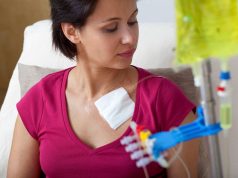Rate of outpatient visits, inpatient bed-days up, especially for those requiring multiple chemo courses
WEDNESDAY, Feb. 15, 2017 (HealthDay News) — Relapse-free Hodgkin’s lymphoma (HL) survivors have increased health care use up to 10 years after diagnosis, according to a study published online Feb. 4 in the American Journal of Hematology.
Ingrid Glimelius, M.D., Ph.D., from the Karolinska Institutet in Stockholm, and colleagues identified 1,017 HL survivors diagnosed in 2000 to 2009 surviving at least one year after diagnosis, and 4,031 age-, sex-, and calendar year-matched comparators from Swedish nationwide registers. Across treatment subgroups, the authors examined the incidence rate ratios (IRRs) for outpatient visits and inpatient bed-days after the first year and up to 14 years after diagnosis. They excluded scheduled outpatient visits for HL.
The researchers found that the rate of outpatient visits was increased almost two-fold for survivors versus comparators (IRR, 1.8); higher rates persisted up to 10 years after diagnosis. Among relapse-free survivors, the rate of inpatient bed-days was more than three-fold that of comparators (IRR, 3.6); the increase persisted up to four years after diagnosis. The rates of outpatient visits and bed-days were higher for patients requiring six to eight chemotherapy courses (IRRs, 1.4 and 3.7, respectively) compared with patients treated with two to four courses plus radiotherapy. Chest pain, keratitis, asthma, diabetes mellitus, and depression were reported as reasons for excess health care use.
“Contemporary treatment, chemotherapy in particular, was associated with excess health care use among HL survivors during the first decade postdiagnosis,” the authors write.
Full Text (subscription or payment may be required)
Copyright © 2017 HealthDay. All rights reserved.








